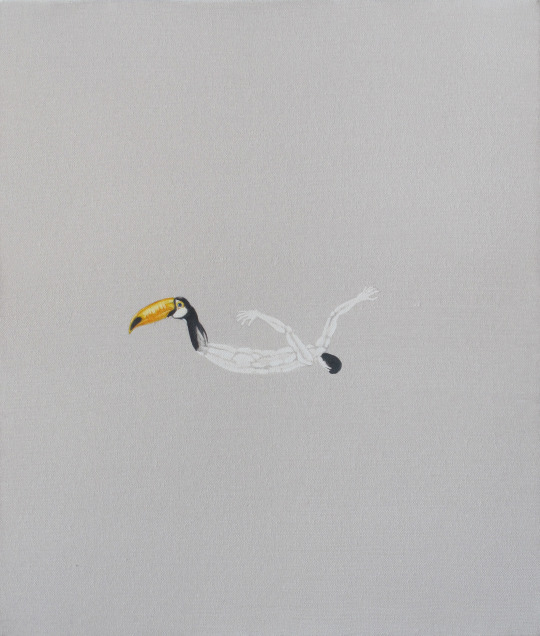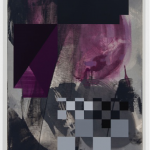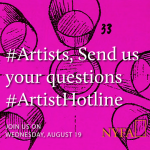IF HUMANS COULD FLY: IN CONVERSATION WITH AKIRA IKEZOE
“What I’m doing with art is just like trying to invade a castle which has many gates. No matter which gate I choose, the final destination is probably the same.”
Trained as a printmaker, artist Akira Ikezoe currently explores painting, drawing, video, and animation in his practice.
His intricate paintings and drawings often morph humans and animals with their familiar environments, creating spaces of pleasure and intrigue for viewers to explore. Such instances of transformation also permeate Ikezoe’s recent time-based work. He hails from Japan, currently lives and works in Brooklyn, NY and exhibits internationally. Ikezoe generously discusses his studio practice and fiscally sponsored project Hole with NYFA Current.
Visiting Guatemala City? Be sure to check out Ikezoe’s solo exhibition later this month:
What: Akira Ikzoe Solo Exhibition
Where: Proyectos Ultravioleta / Guatemala City
When: August 29 through September
NYFA: Exploring humans and their relationship to their surrounding environments is the core of your practice. How did art become the vehicle through which you explore human existence? How does your personal relationship with nature and built environments influence your ideas in the studio?
AI: I grew up in the suburbs of the small city Kochi, in Japan, in the 90’s when the Japanese economy collapsed. Many local businesses were closed and empty houses and vacant lots were popping up. I was surrounded by many things that seemed to be melting into the surrounding nature, such as abandoned cars, rusty playground equipment and an elevated railroad—the construction of which has been postponed for a long time. They looked like fusions of human activity and the surrounding nature and gave me difficulty in drawing the borderline between the inside and outside of human territories.
I believe nature exists not only in our surroundings, but also inside of our bodies. We can’t fully control the growth and aging of our body, sickness, or many activities related to our animal instincts. I’m very interested in the human body as a place where nature and culture meet. It’s a contradicting coexistence and I think it’s similar to what I saw in my hometown—nature and culture invading each other.
I like drawing. Once I draw a line (or find dirt or stain) on a piece of paper, the line’s color, shape and texture stimulate my mental and physical memories and remind me of something related to my past experience. It is just like the connection between smell and memory, sometimes a particular smell instinctively reminds us of something related to our past. Then this line leads me to draw a second line, which stimulates my memory again. These lines, drawn by a chain of actions, make a shape from fragments of my memory including human figures, plants, buildings, etc. I use drawing as an instinctive way of taking something from my experience and formulating new ideas. Most of my works are based on my drawing.
NYFA: What are five things a guest in your studio would immediately notice about the space? How does the studio you inhabit influence your work?
AI: Many visitors say that it’s cleaner and more organized than they expected. I don’t know why people assume my studio is a mess. I always have paintings in process on the wall and visitors mention my painting process, materials, and bring up similar artists, mostly Hieronymus Bosch.
I put many tiny pieces of memo or drawings on the wall and desk and we sometimes start a conversation from those memos. Some of them are written in Japanese so visitors ask the meaning.
I have some plants in my studio and visitors would have also found a Power Mac G4 which I used [for] more than 10 years, but I got rid of it recently.
Since coming from Japan to NY in 2010, I have moved my studio three times. I also participated in four residency programs in the US so far. What I always feel about my studios is that I’m here temporarily and will have to leave at some point. This current situation, which doesn’t let me have many things, makes my work style very simple. I think this is the reason why I mainly make 2D works and videos today.

NYFA: How does your background in printmaking and painting inform your work in other disciplines such as video, animation and performance? What connections do you make between these different mediums? Why did you turn to animation for your fiscally sponsored project Hole?
AI: What I’m doing with art is just like trying to invade a castle which has many gates. No matter which gate I choose, the final destination is probably the same. Once I break in through a gate, I can open other gates from the inside, but there is always another level of closed gates to go deeper inside. Each medium has different properties. They work as the keys to open the gates.
NYFA: I am drawn to delicate lines and sharply rendered details joining to create nonsensical or contradictory
forms. For example, the man with a tail in Hole or humans and toucans in the paintings Flight Training I and Flight Training II. How do you arrive at an idea and decide to execute it?
AI: I draw a lot. Sometimes I put a piece of paper on a drawing I made before and start drawing by following the lines I can see through. At some point I stop following and make something new. By doing this process, a bird and a car can be combined together. My sketch book contains many drawings made by this process. Those drawings sometimes work as a flipbook. That’s how I started becoming interested in animation.

NYFA: Why did you decide to move to New York City and how did your upbringing influence this decision? What was the transition to New York like?
AI: Before moving to NYC, I had some opportunities to show my work in the US from 2007 to 2009. I participated in Geisai Miami, an art fair organized by Takashi Murakami, in 2007. From 2008, my work was represented by Esso Gallery in NY. Unfortunately, Esso Gallery was closed in 2009. Throughout this period, in which I traveled to the US twice and shipped my paintings to the US many times, my interest in NYC grew and I was feeling a great difference between the art worlds in Tokyo and NYC. It was the dynamics of the system of the art world which involves various people from all over the world. In NYC, art was woven into every aspect of the society, such as the political, commercial and educational field. That way, the significance of art in the society is much higher than in Tokyo where the art scene looked kind of isolated from the rest of the society. Back then, it was natural for me to make the decision of moving to NYC as the next place for my activity.
At the same time, I had another motivation to go outside of Japan. I wanted to be able to speak in English. I used to ask my Japanese friends, who know English, whenever I needed to communicate in English. It made me feel an inferiority complex. It was not a jealousy towards bilingual Japanese people, it was more like a sad feeling about the reality that English is superior to Japanese. Once we go outside of Japan, nobody understands our language, but English. It took me years to admit this power balance but the more I exposed myself to the international art world, the more obvious it became. In the first year in NYC, I was frustrated about my learning speed while the surroundings were changed instantly. However it was also an interesting experience for me. I was feeling a similarity between speaking in a different language with limited vocabularies and making something with materials at hand. In terms of construction, I always had some missing parts and tried to substitute with other materials which were not ideal. It was like being a baby or caveman and going through the early and primitive stage of the development again. To answer the question, I would say the transition to NYC was like “regression” in a good way.
NYFA: Based upon your experience growing up in Japan, attending university there, and now living and working in Brooklyn, NY, what advice can you offer to the emerging international artists interested in working in New York City?
AI: Seeing is believing.
NYFA: Why did you decide it was a good time in your career to apply for fiscal sponsorship and what is the impact of your participation in NYFA’s Fiscal Sponsorship program?
AI: I participated in a group show titled Play with Nature and Played by Nature at Satoshi Koyama Gallery in Tokyo in 2013. The concept of this exhibition started with a dialogue that the curator James Jack had with one of the Mono-ha artists, Noboru Takayama, about the relationship between human beings and nature after Japan’s 2011 earthquake.
In this exhibition, which made me rethink my personal relationship with the surrounding nature, I showed some works including a series of animations titled, Hole. Though this was the first time for me to show my animation, it was well received and animation has become one of my most amusing and effective ways of sharing my work.
On the other hand, this animation had some technical problems, such as resolution or digital effects. This experience motivated me to apply to NYFA’s fiscal sponsorship to raise funds for the creating, promoting, screening and distributing of my new animation. The production has been successfully completed with donations through the fiscal sponsorship. Now I’m raising funds for the rest of the process. The great aspect for me to be a participant in this fiscal sponsorship is that I learned about the system of donations and tax deductions in the US, by which big non-profit organizations have been run.
Visit Ikezoe’s website for more wonderful images and video clips. Consider making a tax-deductible donation on his NYFA fiscal sponsorship project page. Interested in learning more about the benefits of fiscal sponsorship? Click here for more details.
– Interview conducted by Fiscal Sponsorship Program Assistant, Madeleine Cutrona
Images, from top: Akira Ikezoe, Flight training I, 2014, oil on canvas; Hole, 2012, Animation; Flight training II, 2014, oil on canvas.





